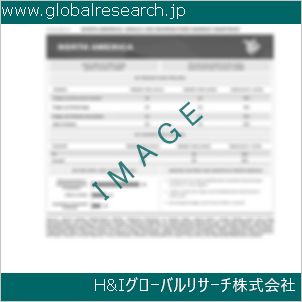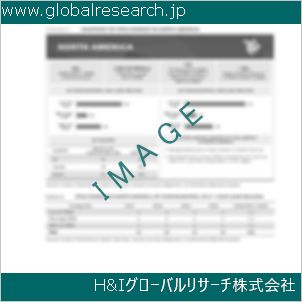1 Pet Insecticide Market Overview
1.1 Product Overview and Scope of Pet Insecticide
1.2 Pet Insecticide Segment by Type
1.2.1 Global Pet Insecticide Market Value Comparison by Type (2023-2029)
1.2.2 Powder
1.2.3 Liquid
1.3 Pet Insecticide Segment by Application
1.3.1 Global Pet Insecticide Market Value by Application: (2023-2029)
1.3.2 Cat
1.3.3 Dog
1.3.4 Reptile
1.3.5 Other
1.4 Global Pet Insecticide Market Size Estimates and Forecasts
1.4.1 Global Pet Insecticide Revenue 2018-2029
1.4.2 Global Pet Insecticide Sales 2018-2029
1.4.3 Global Pet Insecticide Market Average Price (2018-2029)
1.5 Assumptions and Limitations
2 Pet Insecticide Market Competition by Manufacturers
2.1 Global Pet Insecticide Sales Market Share by Manufacturers (2018-2023)
2.2 Global Pet Insecticide Revenue Market Share by Manufacturers (2018-2023)
2.3 Global Pet Insecticide Average Price by Manufacturers (2018-2023)
2.4 Global Pet Insecticide Industry Ranking 2021 VS 2022 VS 2023
2.5 Global Key Manufacturers of Pet Insecticide, Manufacturing Sites & Headquarters
2.6 Global Key Manufacturers of Pet Insecticide, Product Type & Application
2.7 Pet Insecticide Market Competitive Situation and Trends
2.7.1 Pet Insecticide Market Concentration Rate
2.7.2 The Global Top 5 and Top 10 Largest Pet Insecticide Players Market Share by Revenue
2.7.3 Global Pet Insecticide Market Share by Company Type (Tier 1, Tier 2 and Tier 3)
2.8 Manufacturers Mergers & Acquisitions, Expansion Plans
3 Pet Insecticide Retrospective Market Scenario by Region
3.1 Global Pet Insecticide Market Size by Region: 2018 Versus 2022 Versus 2029
3.2 Global Pet Insecticide Global Pet Insecticide Sales by Region: 2018-2029
3.2.1 Global Pet Insecticide Sales by Region: 2018-2023
3.2.2 Global Pet Insecticide Sales by Region: 2024-2029
3.3 Global Pet Insecticide Global Pet Insecticide Revenue by Region: 2018-2029
3.3.1 Global Pet Insecticide Revenue by Region: 2018-2023
3.3.2 Global Pet Insecticide Revenue by Region: 2024-2029
3.4 North America Pet Insecticide Market Facts & Figures by Country
3.4.1 North America Pet Insecticide Market Size by Country: 2018 VS 2022 VS 2029
3.4.2 North America Pet Insecticide Sales by Country (2018-2029)
3.4.3 North America Pet Insecticide Revenue by Country (2018-2029)
3.4.4 United States
3.4.5 Canada
3.5 Europe Pet Insecticide Market Facts & Figures by Country
3.5.1 Europe Pet Insecticide Market Size by Country: 2018 VS 2022 VS 2029
3.5.2 Europe Pet Insecticide Sales by Country (2018-2029)
3.5.3 Europe Pet Insecticide Revenue by Country (2018-2029)
3.5.4 Germany
3.5.5 France
3.5.6 U.K.
3.5.7 Italy
3.5.8 Russia
3.6 Asia Pacific Pet Insecticide Market Facts & Figures by Country
3.6.1 Asia Pacific Pet Insecticide Market Size by Country: 2018 VS 2022 VS 2029
3.6.2 Asia Pacific Pet Insecticide Sales by Country (2018-2029)
3.6.3 Asia Pacific Pet Insecticide Revenue by Country (2018-2029)
3.6.4 China
3.6.5 Japan
3.6.6 South Korea
3.6.7 India
3.6.8 Australia
3.6.9 China Taiwan
3.6.10 Indonesia
3.6.11 Thailand
3.6.12 Malaysia
3.7 Latin America Pet Insecticide Market Facts & Figures by Country
3.7.1 Latin America Pet Insecticide Market Size by Country: 2018 VS 2022 VS 2029
3.7.2 Latin America Pet Insecticide Sales by Country (2018-2029)
3.7.3 Latin America Pet Insecticide Revenue by Country (2018-2029)
3.7.4 Mexico
3.7.5 Brazil
3.7.6 Argentina
3.8 Middle East and Africa Pet Insecticide Market Facts & Figures by Country
3.8.1 Middle East and Africa Pet Insecticide Market Size by Country: 2018 VS 2022 VS 2029
3.8.2 Middle East and Africa Pet Insecticide Sales by Country (2018-2029)
3.8.3 Middle East and Africa Pet Insecticide Revenue by Country (2018-2029)
3.8.4 Turkey
3.8.5 Saudi Arabia
3.8.6 UAE
4 Segment by Type
4.1 Global Pet Insecticide Sales by Type (2018-2029)
4.1.1 Global Pet Insecticide Sales by Type (2018-2023)
4.1.2 Global Pet Insecticide Sales by Type (2024-2029)
4.1.3 Global Pet Insecticide Sales Market Share by Type (2018-2029)
4.2 Global Pet Insecticide Revenue by Type (2018-2029)
4.2.1 Global Pet Insecticide Revenue by Type (2018-2023)
4.2.2 Global Pet Insecticide Revenue by Type (2024-2029)
4.2.3 Global Pet Insecticide Revenue Market Share by Type (2018-2029)
4.3 Global Pet Insecticide Price by Type (2018-2029)
5 Segment by Application
5.1 Global Pet Insecticide Sales by Application (2018-2029)
5.1.1 Global Pet Insecticide Sales by Application (2018-2023)
5.1.2 Global Pet Insecticide Sales by Application (2024-2029)
5.1.3 Global Pet Insecticide Sales Market Share by Application (2018-2029)
5.2 Global Pet Insecticide Revenue by Application (2018-2029)
5.2.1 Global Pet Insecticide Revenue by Application (2018-2023)
5.2.2 Global Pet Insecticide Revenue by Application (2024-2029)
5.2.3 Global Pet Insecticide Revenue Market Share by Application (2018-2029)
5.3 Global Pet Insecticide Price by Application (2018-2029)
6 Key Companies Profiled
6.1 Zoetis
6.1.1 Zoetis Corporation Information
6.1.2 Zoetis Description and Business Overview
6.1.3 Zoetis Pet Insecticide Sales, Revenue and Gross Margin (2018-2023)
6.1.4 Zoetis Pet Insecticide Product Portfolio
6.1.5 Zoetis Recent Developments/Updates
6.2 Boehringer Ingelheim
6.2.1 Boehringer Ingelheim Corporation Information
6.2.2 Boehringer Ingelheim Description and Business Overview
6.2.3 Boehringer Ingelheim Pet Insecticide Sales, Revenue and Gross Margin (2018-2023)
6.2.4 Boehringer Ingelheim Pet Insecticide Product Portfolio
6.2.5 Boehringer Ingelheim Recent Developments/Updates
6.3 Merck
6.3.1 Merck Corporation Information
6.3.2 Merck Description and Business Overview
6.3.3 Merck Pet Insecticide Sales, Revenue and Gross Margin (2018-2023)
6.3.4 Merck Pet Insecticide Product Portfolio
6.3.5 Merck Recent Developments/Updates
6.4 Elanco
6.4.1 Elanco Corporation Information
6.4.2 Elanco Description and Business Overview
6.4.3 Elanco Pet Insecticide Sales, Revenue and Gross Margin (2018-2023)
6.4.4 Elanco Pet Insecticide Product Portfolio
6.4.5 Elanco Recent Developments/Updates
6.5 Virbac
6.5.1 Virbac Corporation Information
6.5.2 Virbac Description and Business Overview
6.5.3 Virbac Pet Insecticide Sales, Revenue and Gross Margin (2018-2023)
6.5.4 Virbac Pet Insecticide Product Portfolio
6.5.5 Virbac Recent Developments/Updates
6.6 Dechra Veterinary Products
6.6.1 Dechra Veterinary Products Corporation Information
6.6.2 Dechra Veterinary Products Description and Business Overview
6.6.3 Dechra Veterinary Products Pet Insecticide Sales, Revenue and Gross Margin (2018-2023)
6.6.4 Dechra Veterinary Products Pet Insecticide Product Portfolio
6.6.5 Dechra Veterinary Products Recent Developments/Updates
6.7 Ceva
6.6.1 Ceva Corporation Information
6.6.2 Ceva Description and Business Overview
6.6.3 Ceva Pet Insecticide Sales, Revenue and Gross Margin (2018-2023)
6.4.4 Ceva Pet Insecticide Product Portfolio
6.7.5 Ceva Recent Developments/Updates
6.8 Vetoquinol
6.8.1 Vetoquinol Corporation Information
6.8.2 Vetoquinol Description and Business Overview
6.8.3 Vetoquinol Pet Insecticide Sales, Revenue and Gross Margin (2018-2023)
6.8.4 Vetoquinol Pet Insecticide Product Portfolio
6.8.5 Vetoquinol Recent Developments/Updates
6.9 Ouro Fino Saude
6.9.1 Ouro Fino Saude Corporation Information
6.9.2 Ouro Fino Saude Description and Business Overview
6.9.3 Ouro Fino Saude Pet Insecticide Sales, Revenue and Gross Margin (2018-2023)
6.9.4 Ouro Fino Saude Pet Insecticide Product Portfolio
6.9.5 Ouro Fino Saude Recent Developments/Updates
6.10 Norbrook
6.10.1 Norbrook Corporation Information
6.10.2 Norbrook Description and Business Overview
6.10.3 Norbrook Pet Insecticide Sales, Revenue and Gross Margin (2018-2023)
6.10.4 Norbrook Pet Insecticide Product Portfolio
6.10.5 Norbrook Recent Developments/Updates
6.11 Jindun
6.11.1 Jindun Corporation Information
6.11.2 Jindun Pet Insecticide Description and Business Overview
6.11.3 Jindun Pet Insecticide Sales, Revenue and Gross Margin (2018-2023)
6.11.4 Jindun Pet Insecticide Product Portfolio
6.11.5 Jindun Recent Developments/Updates
6.12 Wuhan chopperlvya
6.12.1 Wuhan chopperlvya Corporation Information
6.12.2 Wuhan chopperlvya Pet Insecticide Description and Business Overview
6.12.3 Wuhan chopperlvya Pet Insecticide Sales, Revenue and Gross Margin (2018-2023)
6.12.4 Wuhan chopperlvya Pet Insecticide Product Portfolio
6.12.5 Wuhan chopperlvya Recent Developments/Updates
6.13 CAHIC
6.13.1 CAHIC Corporation Information
6.13.2 CAHIC Pet Insecticide Description and Business Overview
6.13.3 CAHIC Pet Insecticide Sales, Revenue and Gross Margin (2018-2023)
6.13.4 CAHIC Pet Insecticide Product Portfolio
6.13.5 CAHIC Recent Developments/Updates
7 Industry Chain and Sales Channels Analysis
7.1 Pet Insecticide Industry Chain Analysis
7.2 Pet Insecticide Key Raw Materials
7.2.1 Key Raw Materials
7.2.2 Raw Materials Key Suppliers
7.3 Pet Insecticide Production Mode & Process
7.4 Pet Insecticide Sales and Marketing
7.4.1 Pet Insecticide Sales Channels
7.4.2 Pet Insecticide Distributors
7.5 Pet Insecticide Customers
8 Pet Insecticide Market Dynamics
8.1 Pet Insecticide Industry Trends
8.2 Pet Insecticide Market Drivers
8.3 Pet Insecticide Market Challenges
8.4 Pet Insecticide Market Restraints
9 Research Finding and Conclusion
10 Methodology and Data Source
10.1 Methodology/Research Approach
10.1.1 Research Programs/Design
10.1.2 Market Size Estimation
10.1.3 Market Breakdown and Data Triangulation
10.2 Data Source
10.2.1 Secondary Sources
10.2.2 Primary Sources
10.3 Author List
10.4 Disclaimer
| ※参考情報 ペット用殺虫剤は、家庭で飼われているペットに対する害虫の駆除や予防を目的とした製品です。これらの製品は、犬や猫をはじめとする小動物に使用されることが一般的です。ペット用殺虫剤には、様々な定義や特徴、種類、用途、関連技術が存在し、それぞれの要素が安全で効果的な害虫管理に寄与しています。 まず、ペット用殺虫剤の定義ですが、これはペットの体に寄生する害虫(ノミ、マダニ、シラミ、蚊など)を駆除するための薬剤やスプレー、シャンプーなどの製品を指します。ペットが快適に生活できる環境を提供するためには、これらの害虫の存在を排除することが必要です。特にノミやマダニはペットに皮膚の炎症や感染症を引き起こし、人間にも感染症を媒介することがあるため、適切な対策が求められます。 ペット用殺虫剤の特徴には、使用する環境やペットの種類に応じた特性があります。これらの製品は、一般的にペットの皮膚や被毛に直接適用することができるように設計されています。そのため、成分には安全性が重要視されており、毒性が少ない物質が選ばれる傾向にあります。また、効果の持続時間や効果の持続性も非常に重要です。一般的な製品では、数日から数ヶ月間、効果が持続するものが多く見られます。 ペット用殺虫剤にはいくつかの種類がありますが、大きく分けると、スプレータイプ、滴下タイプ、シャンプータイプ、キャリアタイプなどに分類されます。スプレータイプは使用が簡単で、広い範囲に均一に散布することができるため、特に屋内での使用に適しています。滴下タイプは、ペットの皮膚に直接滴下することで、速やかに効果を発揮します。この方式は、特に効果が強力で、持続時間も比較的長いというメリットがあります。シャンプータイプは、身体を洗浄しつつ、同時に害虫を駆除することができるため、日常的なケアと相まって利用されます。キャリアタイプは、ペットの首輪や衣服などに取り付けることで、持続的に効果を発揮します。 ペット用殺虫剤の用途についても触れておく必要があります。主な用途には、害虫の駆除に加え、予防的措置が含まれます。特に、ノミやマダニは外部からの感染が多いので、予防が非常に重要です。定期的に殺虫剤を使用することで、ペットが外部からの侵入者にさらされるリスクを低減できます。また、害虫は主に湿度が高い場所に生息するため、繁殖環境を特定し、効果的な駆除を行うこともペットの健康を守る重要な要素です。 関連技術としては、ペット用殺虫剤の開発には多くの科学的アプローチが利用されています。例えば、最新の研究では、ナノテクノロジーやバイオテクノロジーを活用した新しい成分の開発が進められており、より効果的で低毒性の製品が市場に登場しています。さらに、ペットの健康状態やライフスタイルを考慮したカスタマイズ製品の開発も進んでいます。これにより、特定のペットに最適な殺虫剤を選ぶことが可能となり、より安全で効果的な害虫駆除が実現されています。 また、ペット用殺虫剤の使用にあたっては注意が必要です。万が一、誤って人間が触れたり飲み込んだりした場合、重篤な症状を引き起こす可能性があるため、使用方法を正確に守ることが必須です。特に小さなお子様や他のペットがいる家庭では、使用時の注意が必要です。製品に記載されている使用方法や注意事項を必ず遵守し、安全を最優先に考慮することが重要です。 さらに、ペット用殺虫剤だけではなく、住環境自体の管理も重要です。定期的に掃除を行い、ペットの生活空間を清潔に保つことで、害虫の発生を防ぐことができます。特に、ペットの寝床やキャリーケースは特に清掃が必要です。また、定期的に洗濯を行い、ペット用の布製品も清潔に保ちましょう。 このように、ペット用殺虫剤は、単なる害虫の駆除にとどまらず、ペットの健康や快適な生活環境を守るための大切な役割を果たしています。選ぶ際には、安全性や効果の持続性、使用方法をよく確認し、適切な製品を選ぶことが重要です。ペットとその家族が共に快適に過ごすことができるよう、正しい知識を持って適切な対策を講じることが求められます。 |
❖ 免責事項 ❖
http://www.globalresearch.jp/disclaimer












